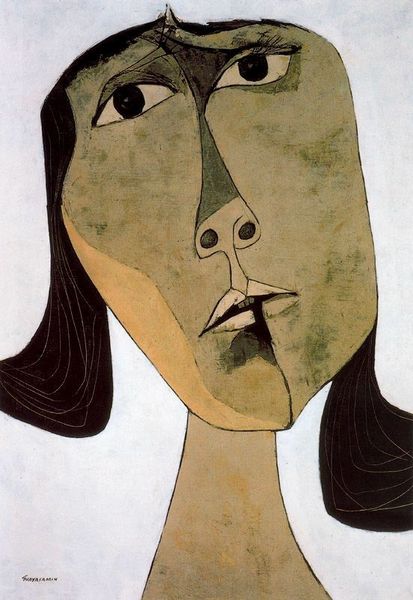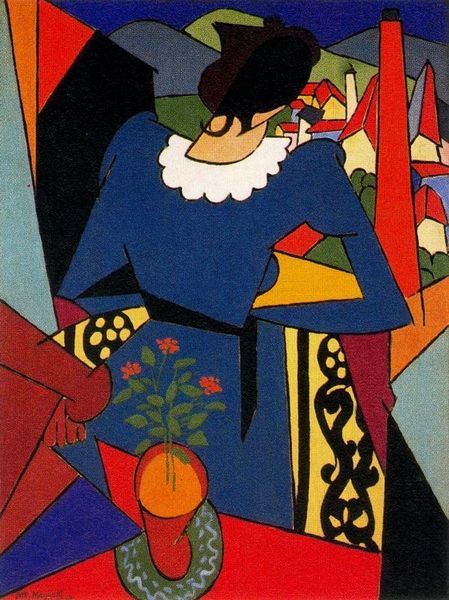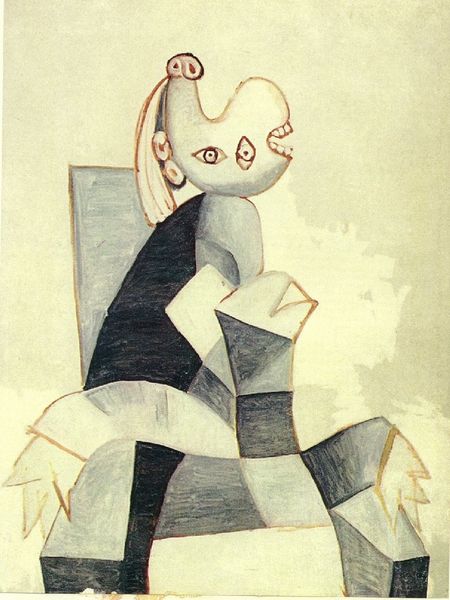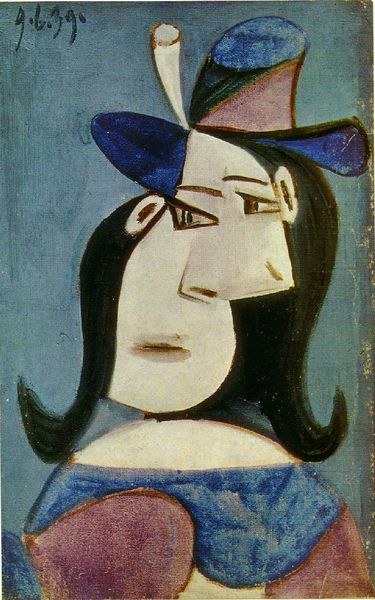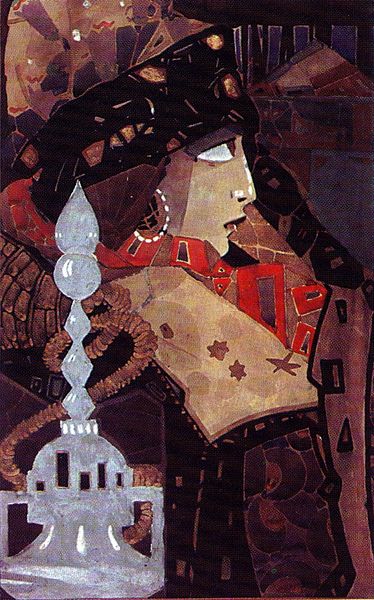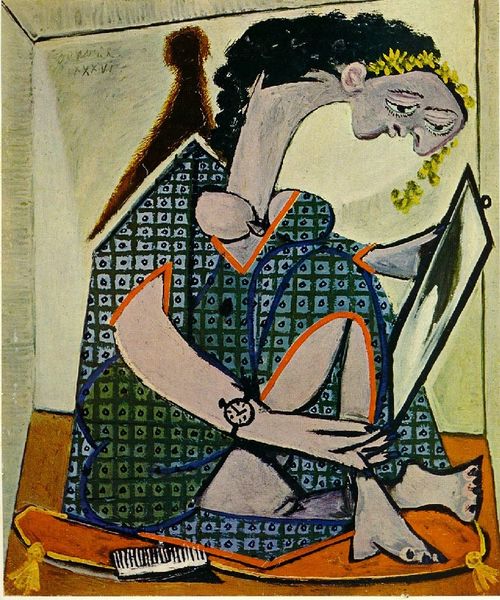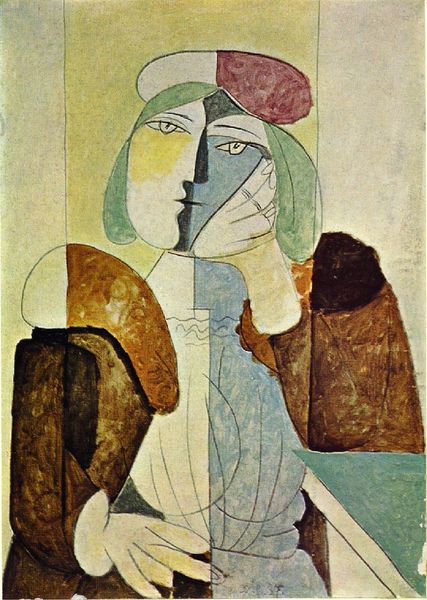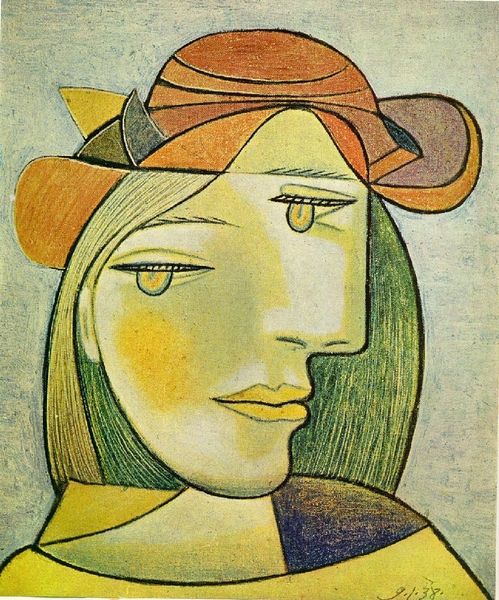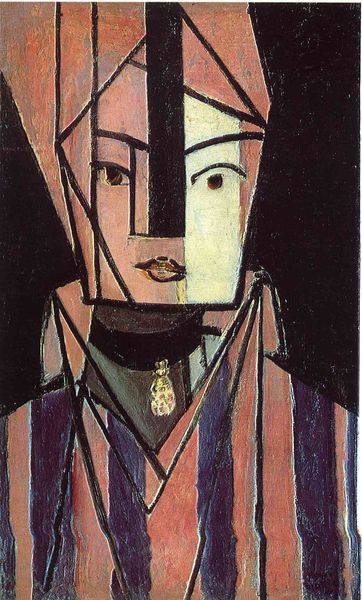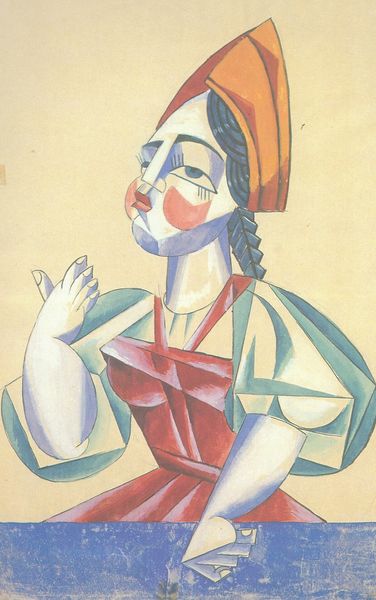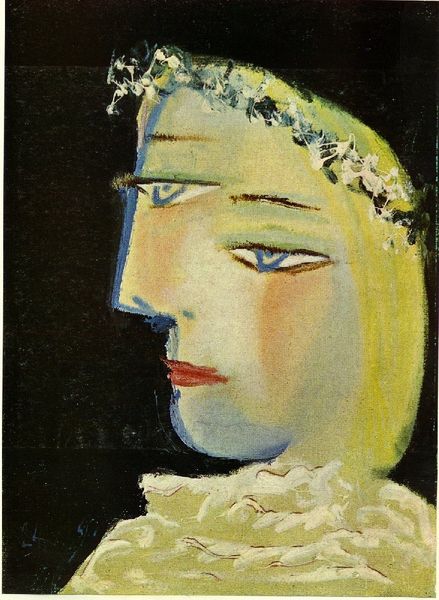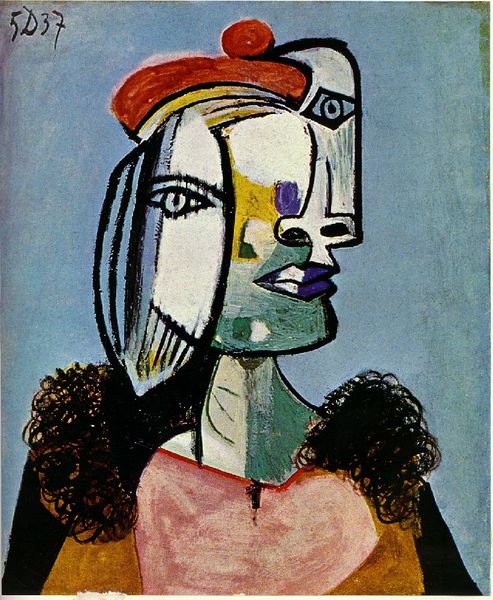
painting, oil-paint
#
portrait
#
cubism
#
painting
#
caricature
#
oil-paint
#
caricature
#
portrait art
#
modernism
Dimensions: 61 x 50 cm
Copyright: Pablo Picasso,Fair Use
Curator: Before us hangs Picasso’s “The Straw Hat with Blue Leaves,” completed in 1936. It resides here, in the Musée Picasso, Paris. Editor: My immediate reaction is… angular. The planes that constitute her face and collarbone almost seem violently divided. It's unsettling, but strangely captivating. Curator: Captivating, indeed. Considering its creation during the interwar period, and Picasso’s own shifting allegiances politically, the fragmented features could be interpreted as a visual metaphor for the fractured societal landscape and anxieties surrounding identity during this time. What social and emotional struggles are reflected here? Editor: The social landscape definitely impacted the production of pigments. By 1936, Picasso would be exclusively using wartime-grade oil paints for several of his portraits of women including, what some would consider, 'weaker materials', due to import restrictions. Knowing the paintings consist of different substances changes my perception of the works’ context. Curator: The layering of paint certainly directs the eye; those jagged features force you to confront a multifaceted persona. Looking at it through a feminist lens, is Picasso empowering his muse through Cubist innovation or further objectifying her by deconstructing her image? Editor: It is that tension that grips me. Notice, also, the pronounced edges and sharp transitions where light is being reflected. Did Picasso deliberately choose particular brushes and impasto to capture or suppress those textural reflections? It speaks volumes about control of his craft, of what the labor meant during that time. Curator: Absolutely. And isn't that always the negotiation with portraiture, really? Navigating that precarious line between presentation and representation. That's further exacerbated through the lens of Cubism’s geometric distortion and, given the socio-political context, its potential commentary on the fractured human experience. Editor: Seeing the interplay of pigments in that light emphasizes, to me, how paintings during wartime, even depictions of something beautiful like portraiture, were inherently built upon an act of forced labor and restricted choices of raw materials. Even portraits in peacetime cannot escape the inherent economic structures which support artists, though that element of exploitation isn't always as prevalent or explicit. Curator: That interplay offers us some fascinating insights, especially on material access and availability based on different levels of labour during global conflicts, impacting artists of Picasso’s status. Editor: Yes, that material reality lends a critical weight, not only to Picasso’s oeuvre but also to understanding production-based exploitation through the making of art and portraits during wartime.
Comments
No comments
Be the first to comment and join the conversation on the ultimate creative platform.
